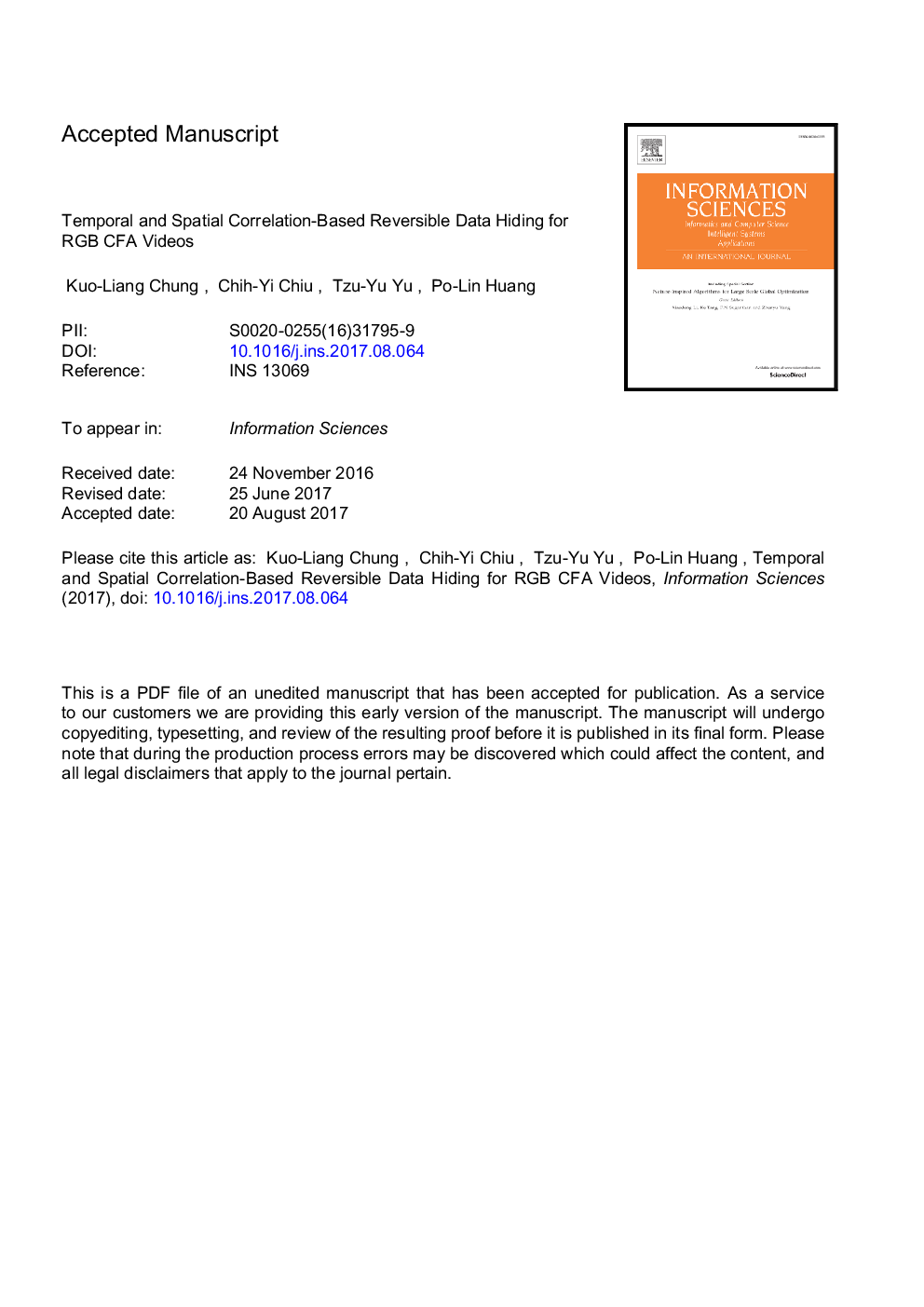| Article ID | Journal | Published Year | Pages | File Type |
|---|---|---|---|---|
| 4944169 | Information Sciences | 2017 | 42 Pages |
Abstract
Considering a mosaic video, in which each mosaic image could be captured by any of the existing eleven RGB color filter array (CFA) structures and each mosaic pixel contains only one primary color, this paper proposes a novel spatial and temporal correlation-based reversible data hiding (RDH) method. In the proposed RDH method, an intellectual switching strategy to select the spatial correlation-based or the temporal prediction scheme to maximize the quality improvement of the marked mosaic videos under fixed embedding capacity. Based on eight test mosaic videos, the experimental results demonstrate that in terms of peak signal-to-noise ratio (PSNR), color PSNR (CPSNR), structure similarity (SSIM) index, motion-based video integrity evaluation (MOVIE) index, and human perceptual effect, the proposed RDH method clearly outperforms the spatial correlation-based RDH method by Yang et al. and the other four state-of-the-art RDH methods.
Keywords
Related Topics
Physical Sciences and Engineering
Computer Science
Artificial Intelligence
Authors
Kuo-Liang Chung, Chih-Yi Chiu, Tzu-Yu Yu, Po-Lin Huang,
